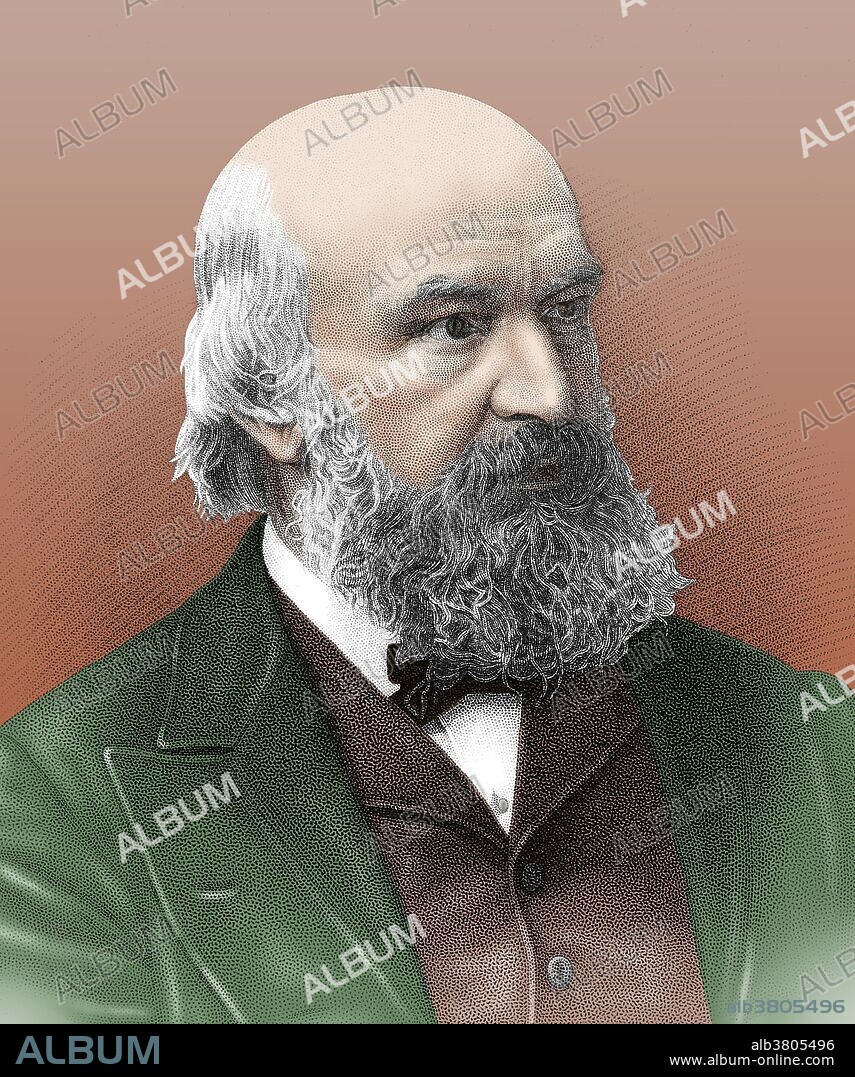alb3805496
John Couch Adams, English Astronomer

|
Ajouter à une autre Lightbox |
|
Ajouter à une autre Lightbox |



Avez-vous déjà un compte? S'identifier
Vous n'avez pas de compte ? S'inscrire
Acheter cette image.
Sélectionnez l'usage:

Titre:
John Couch Adams, English Astronomer
Légende:
Voir la traduction automatique
John Couch Adams (June 5, 1819 - January 21, 1892) was an English mathematician and astronomer. He observed Halley's comet in 1835 and the following year started to make his own astronomical calculations, predictions and observations, engaging in private tutoring to finance his activities. In 1836, his mother inherited a small estate and his promise as a mathematician induced his parents to send him to the University of Cambridge. As a mathematics undergraduate he began investigating irregularities in the orbit of Uranus, which he believed were caused by the presence of an undiscovered planet. Using mathematics alone, he accurately predicted the position of the new planet, now known as Neptune. At the same time, but unknown to each other, the same calculations were made by Urbain Le Verrier. As the facts became known, there was wide recognition that the two astronomers had independently solved the problem of Uranus, and each was ascribed equal importance. But Adams himself publicly acknowledged Le Verrier's priority in the paper that he gave "On the Perturbations of Uranus" to the Royal Astronomical Society in November 1846. Adams also conducted studies into the motion of the moon, terrestrial magnetism, and meteor showers. He won the Gold Medal of the Royal Astronomical Society in 1866. In 1884, he attended the International Meridian Conference as a delegate for Britain. He was Professor in the University of Cambridge from 1859 until his death in 1892 at the age of 72.
Crédit:
Album / Science Source
Autorisations:
Modèle: Non - Propriété: Non
Questions sur les droits?
Questions sur les droits?
Taille de l'image:
2478 x 2969 px | 21.0 MB
Taille d'impression:
21.0 x 25.1 cm | 8.3 x 9.9 in (300 dpi)
Mots clés:
ASTRONOMIE • CÉLÈBRE • CELEBRITE • EUROPÉEN • HOMME • ILLUSTRATION • MATHEMATICIEN • MATHÉMATIQUE • PERSONNAGES • PERSONNALITÉS • PERSONNE • PORTAIT • PORTRAIT • POTRAIT • SCIENCE: ASTRONOMIE
 Pinterest
Pinterest Twitter
Twitter Facebook
Facebook Copier le lien
Copier le lien Email
Email
